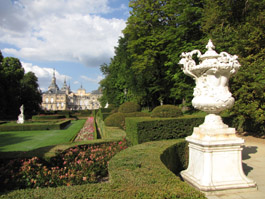
Notes on the study of the Central European Forum Olomouc
 |
| Raffael Santi, Portrait of Pope Julius II, 1511-12, London, National Gallery |
The key question is why Jan Šépka was chosen and why the design is already being defended so stubbornly and simultaneously not very convincingly, even disrespectfully towards the author himself. Or is it perhaps flattering to Jan Šépka when it is stated in the public debate that one of the reasons for his selection was a discount on the fee? Does “resonance with the famous interiors of Piranesi or John Soane” also see anyone else besides Pavel Zatloukal? Is the mere existence of the detail of the upper lighting and the communication bridge on the floor sufficient for the purposeful emphasis on such parallels, without proportional, scale, material, or color analogies? Why is SEFO compared to Libeskind's Jewish Museum, when the functions and the essential message or emotional statement of these buildings is – and must be – diametrically different? Why such a desperate effort to define oneself against an imaginary enemy, to point fingers at the culprits who obstruct the efforts to build a house “of the concentration of modern spirituality”,
 |
| Royal Palace, La Granja de San Ildefonso, 18th century, photo by M. Horáček |
The author of the study should not be absolved of responsibility, but is it the case that modernists have it set up among themselves that from the architect – Moses springs revelation while the critic/theorist – Aaron sees his task as turning the user and viewer to faith? One of the Aarons in this case is the patron – he seized this role with the vigor of Julius II, and it seems that he is equally successful, which alone invokes respect and joy in every lover of art. However, one essential difference emerges, and it is not so much that the Renaissance feudal lord had his own money, while Olomouc's Julius must beg from the administrative behemoth reallocators of leftovers from the feast of “market society.” Julius II, in fact, found Michelangelo and Raphael for his artistic commissions. When Raphael died, nature wept, writes Giorgio Vasari – and such an artistic faith required little struggle; it spread by itself. Let us ask whether behind the obstinate defense of the SEFO study lies precisely the fear that the time of Raphaels, but also the time of John Soanes, Piranesis, or – to stay in Olomouc – the time of architects of the caliber of Domenico Martinelli or Anton Arche has passed. And simultaneously the desire that this fact must be concealed from the public for as long as possible, most likely for its own good. I recently returned from a journey through the country admired by
 |
| Dome before the mihrab of the Great Mosque, Córdoba, 10th century, photo by M. Horáček |
Let us wish SEFO a successful realization that does not even need to deviate significantly from the proposed design. Let us wish all modern Juliuses II enthusiasm and success and especially that they discover their Michelangelos and Raphaels and manage to extract the maximum from their talent. Let us also wish for more arguments that will instead of defensive reactions or ambiguity encourage an open and productive rational debate.
Martin Horáček, October 21, 2009
Quotes (in italics) taken from www.olmuart.cz/?nsm=211 and from an interview with Pavel Zatloukal at
http://olomoucky.denik.cz/online_rozhovory/zatloukal_muzeum_sefo_online.html [15.10.2009].
The English translation is powered by AI tool. Switch to Czech to view the original text source.
3 comments
add comment
Subject
Author
Date
Vyjádření za které se mohu postavit
Eva Šmerdová
29.10.09 10:42
Židovské muzeum
Vích
29.10.09 01:24
souhlasim
cipsek
31.10.09 06:00
show all comments










